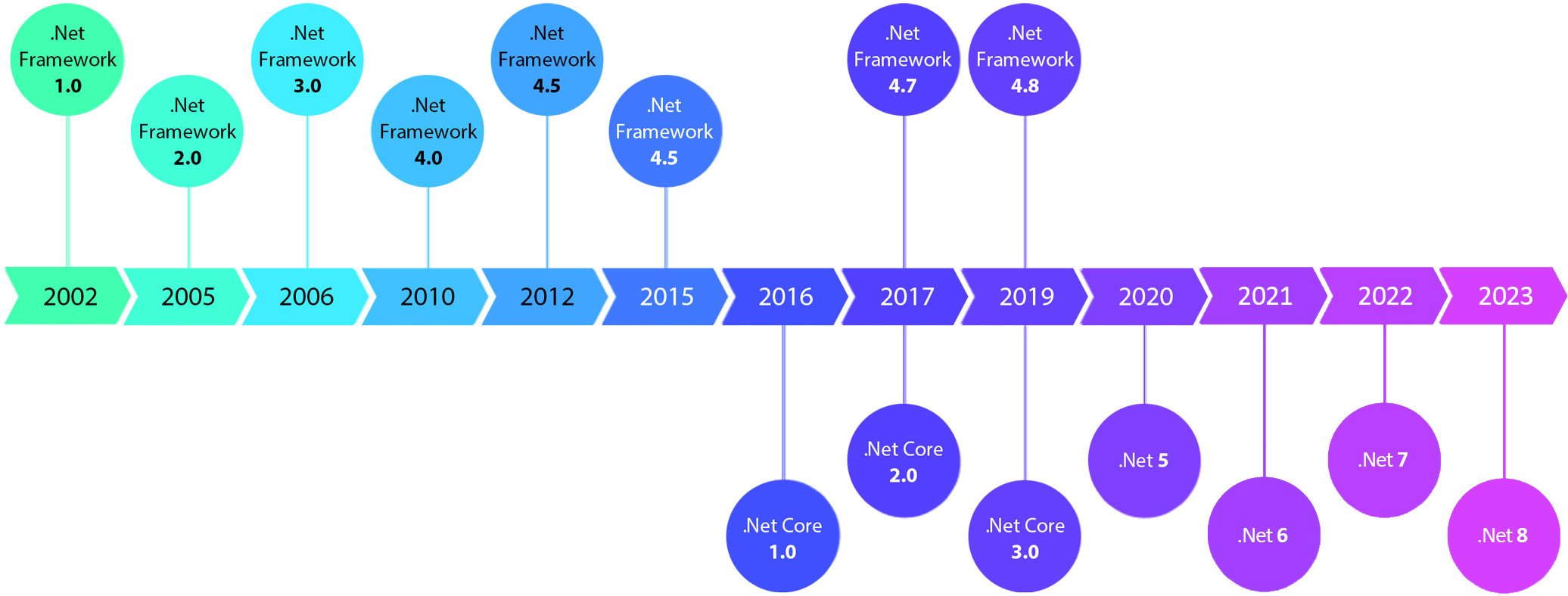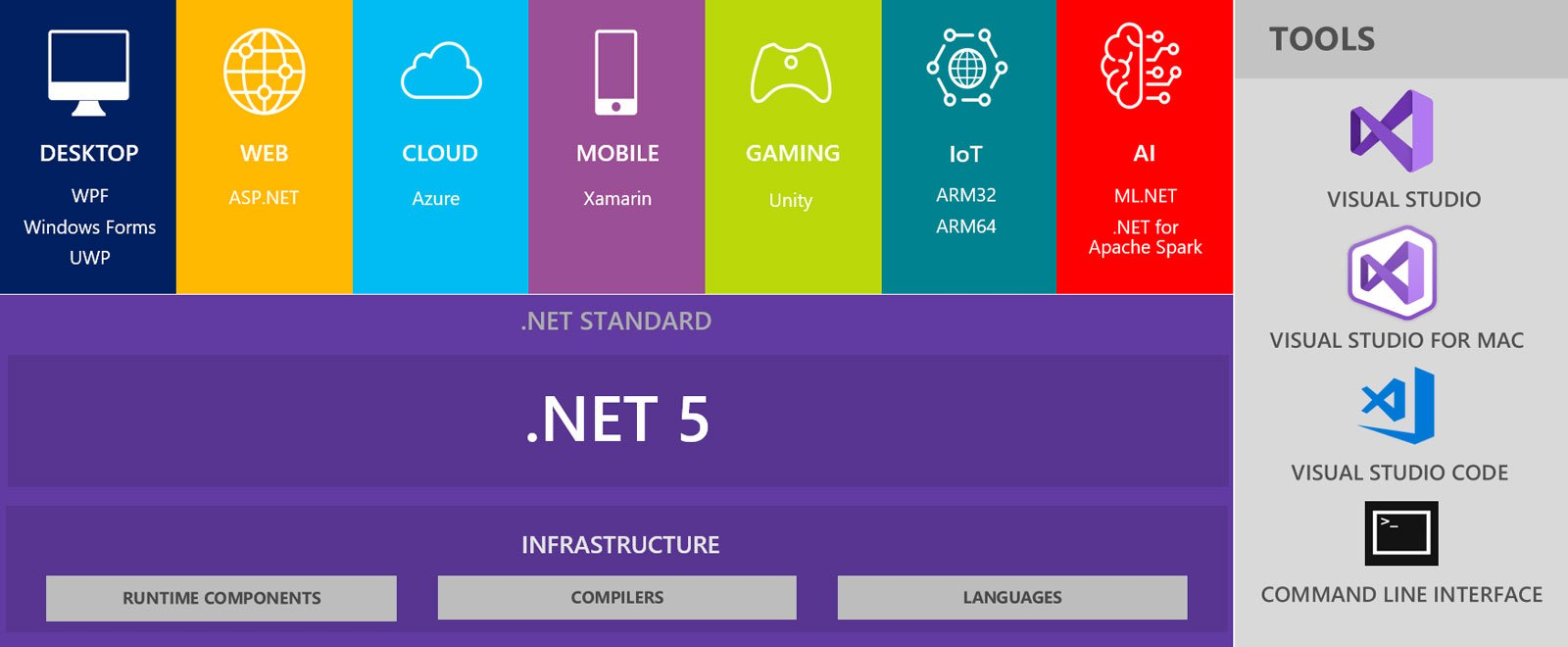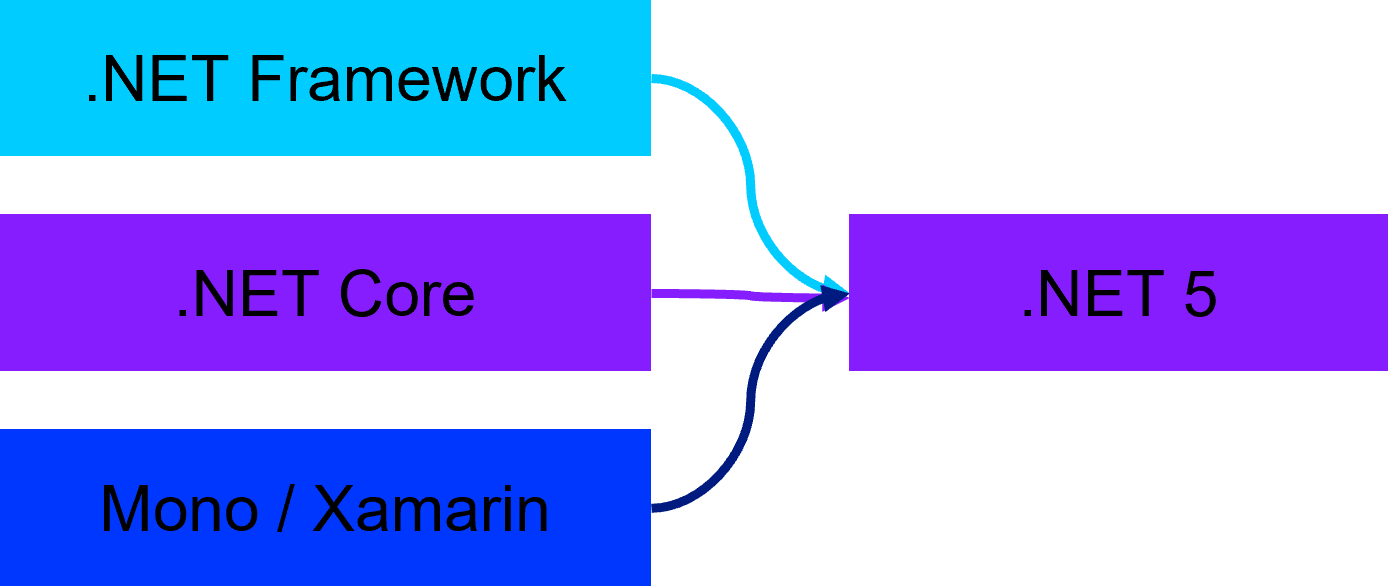.NET is a free, open-source development platform for building many kinds of apps, such as: Web apps, web APIs, microservices, cloud native apps, mobile apps, desktop apps, and Internet of Things (IoT). .NET apps are also supported cross platform, meaning it is compatible with many operating systems, including: Windows, macOS, Linux, Android, iOS, tvOS, and watchOS.
With .NET, your code and project files look and feel the same no matter which type of app you're building. You have access to the same runtime, API, and language capabilities with each app.1
.NET 5.0 is the first major release of .NET Core following 3.1. Here are some highlights about the history of .NET, what's the release lifecycle, what's the supporting policy, and more.2







